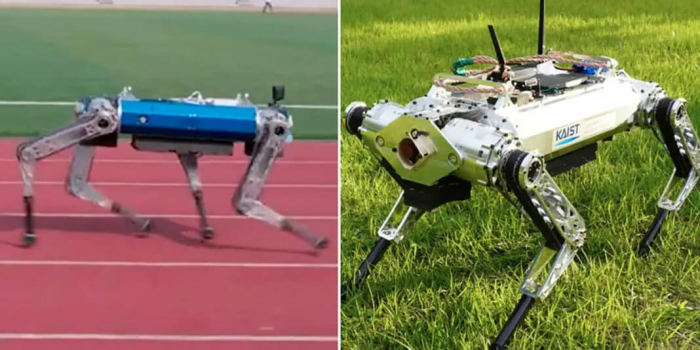A remarkable feat in robotics has been achieved as the Korea Advanced Institute of Science and Technology (KAIST) Dynamic Robot Control and Design Laboratory in South Korea unveils HOUND. This four-legged robot has secured a Guinness World Record.
HOUND’s groundbreaking achievement is highlighted by its record-breaking time of 19.87 seconds, covering the 100-meter dash at an impressive average speed of 11.26 mph (18.12 km/h). The robot, weighing approximately 45 kg and equipped with specialized lightweight feet for sprinting, showcased unparalleled robotic prowess. Starting from a standstill, HOUND demonstrated its capabilities by swiftly sprinting and coming to a controlled stop after crossing the finish line.
Young-Ha Shin, the designer of HOUND, emphasized the singular motor controller’s role, which was trained through reinforcement learning in simulation. Incorporating motor characteristics into the simulation aimed to mirror real-world conditions closely. While the simulation suggests potential for higher speeds, real-world testing is yet to validate these capabilities.

The design intricacies of the robo-dog contribute to its remarkable performance. The parallel configuration of hip and knee actuator modules, coupled with a belt-pulley system transmitting knee actuation, enables a comprehensive range of motion. With optimized mechanical design, HOUND can achieve speeds of up to 3 m/s (6.7 mph), navigate various terrains, walk extended distances, conquer slopes, and traverse obstacles up to 35 cm in height.
Young-Ha Shin explained the importance of instantaneous and steady performance in selecting motors for dynamic-legged locomotion, underscoring the meticulous engineering behind HOUND’s capabilities.
As the creators of HOUND continue their work, the robo-dog’s range of movement and speed is anticipated to evolve further. The world can expect ongoing advancements in robotics and artificial intelligence, with HOUND’s record-breaking sprint as a promising inception for future innovations.


